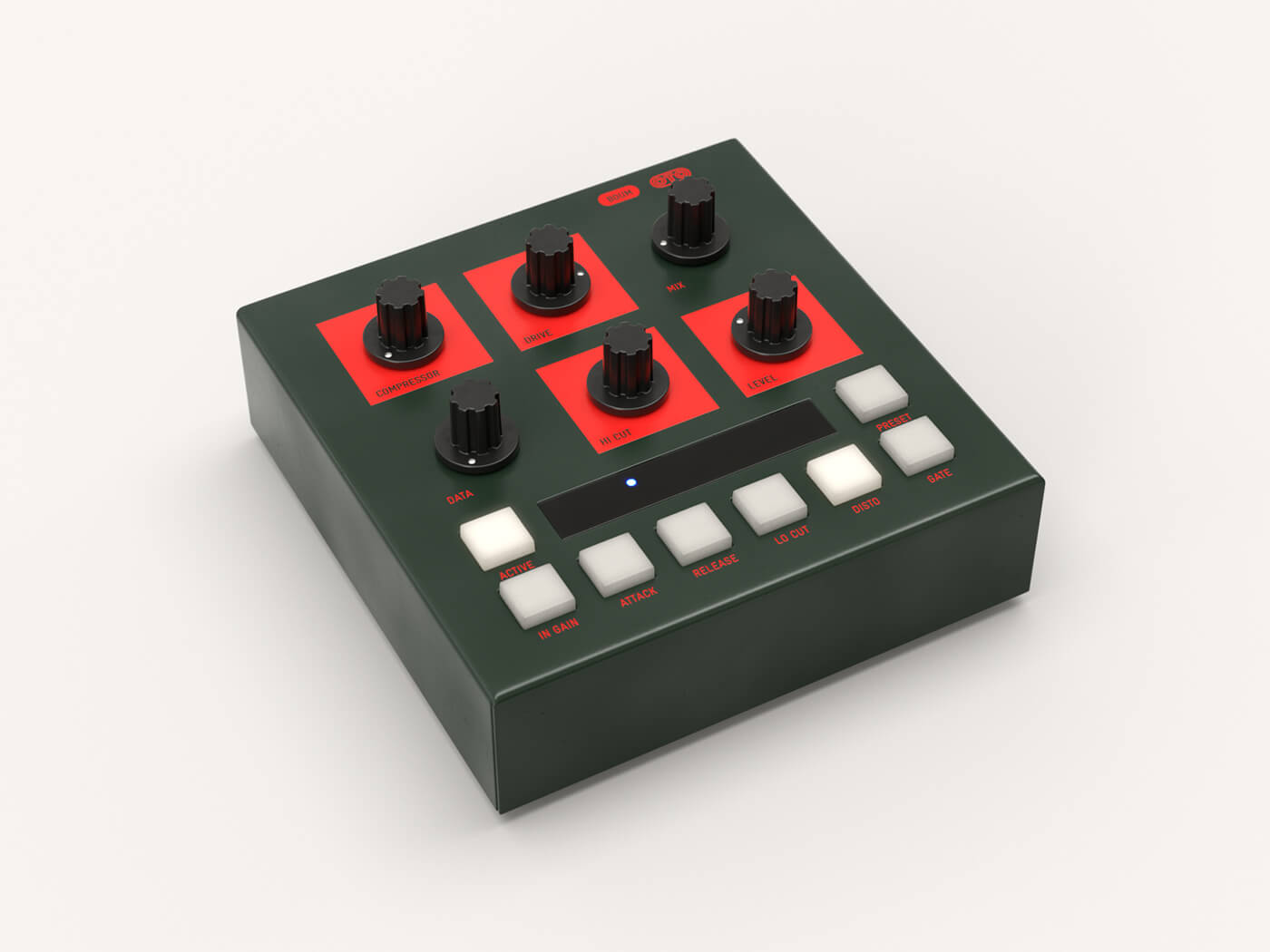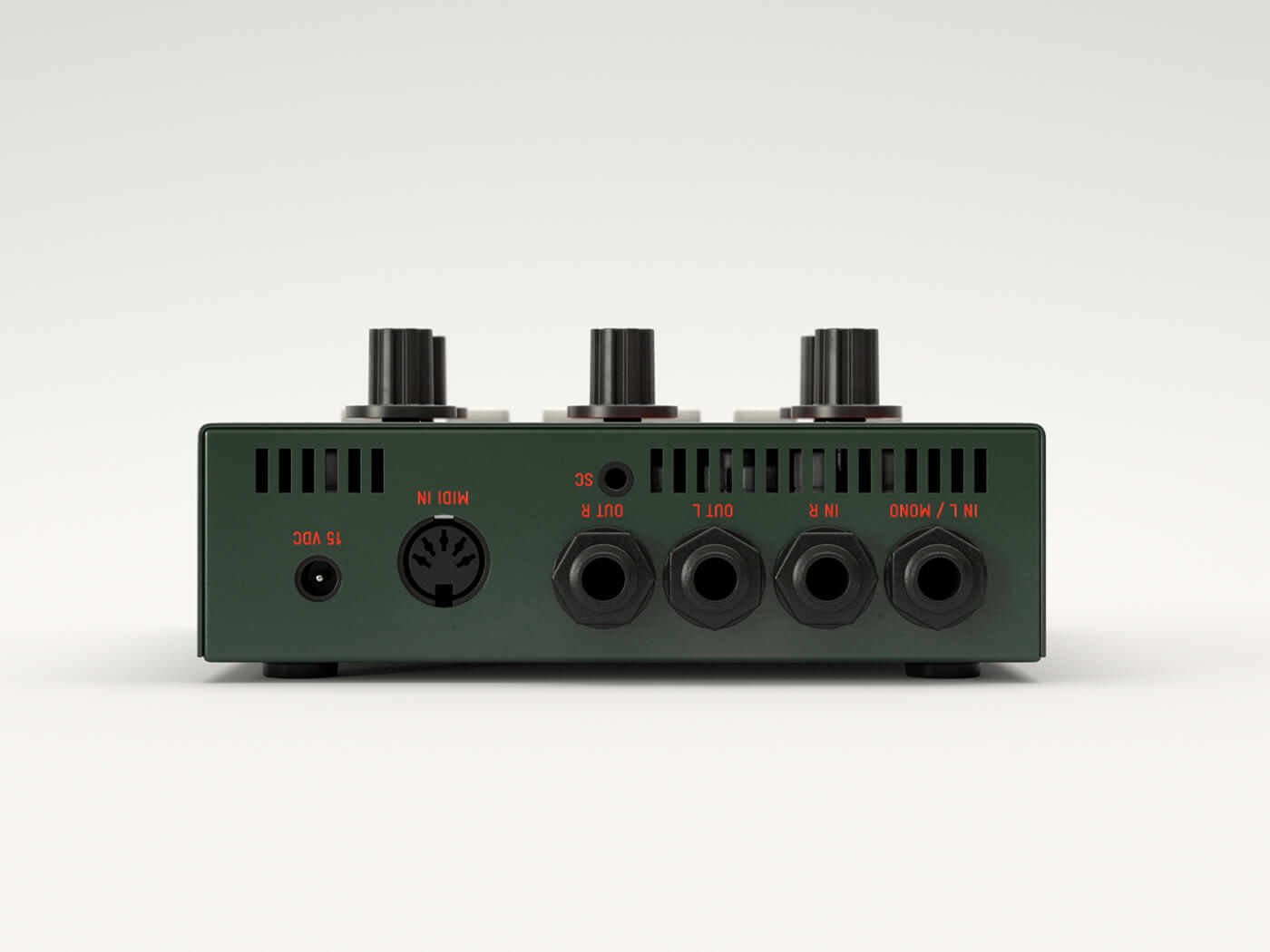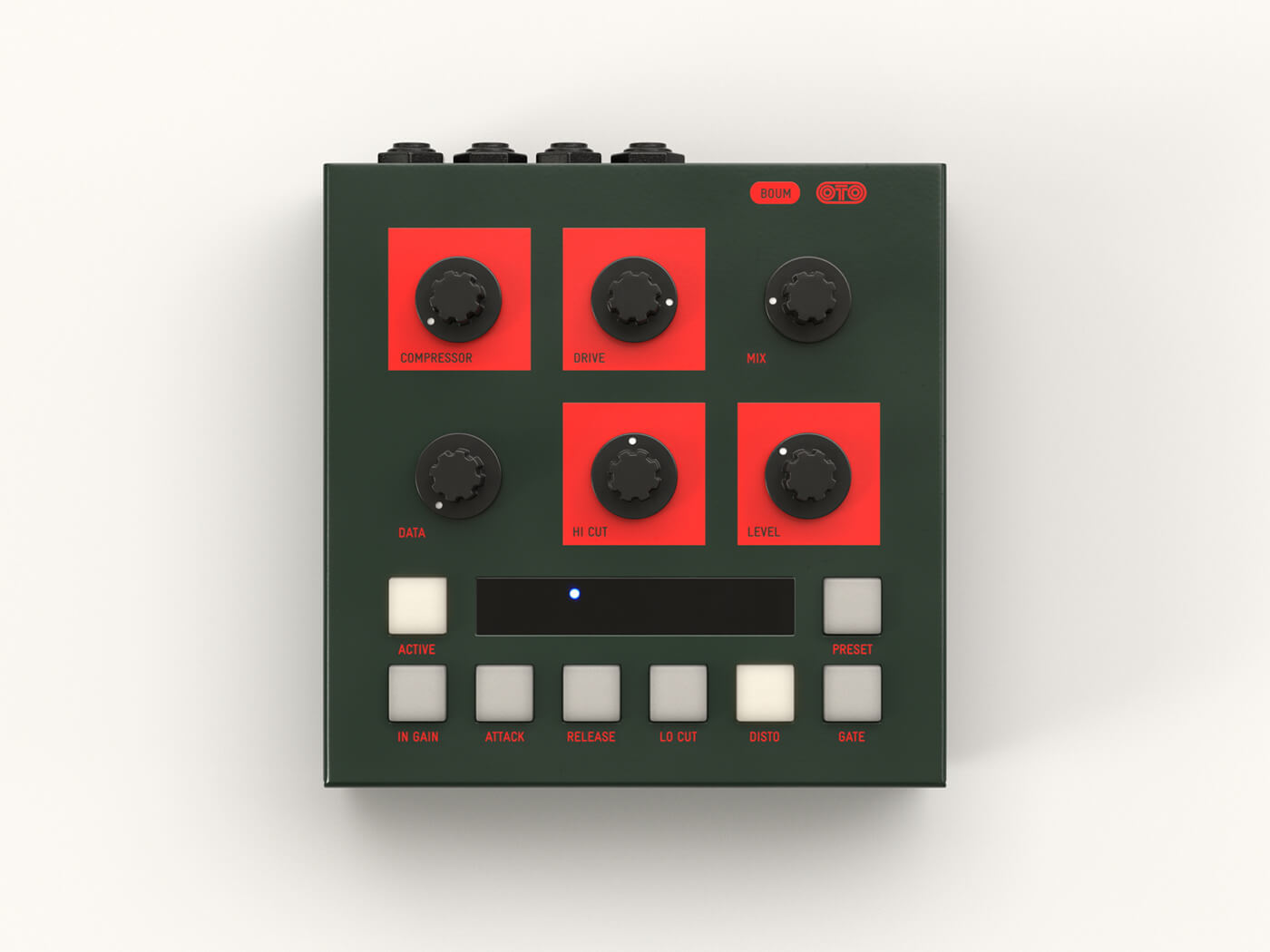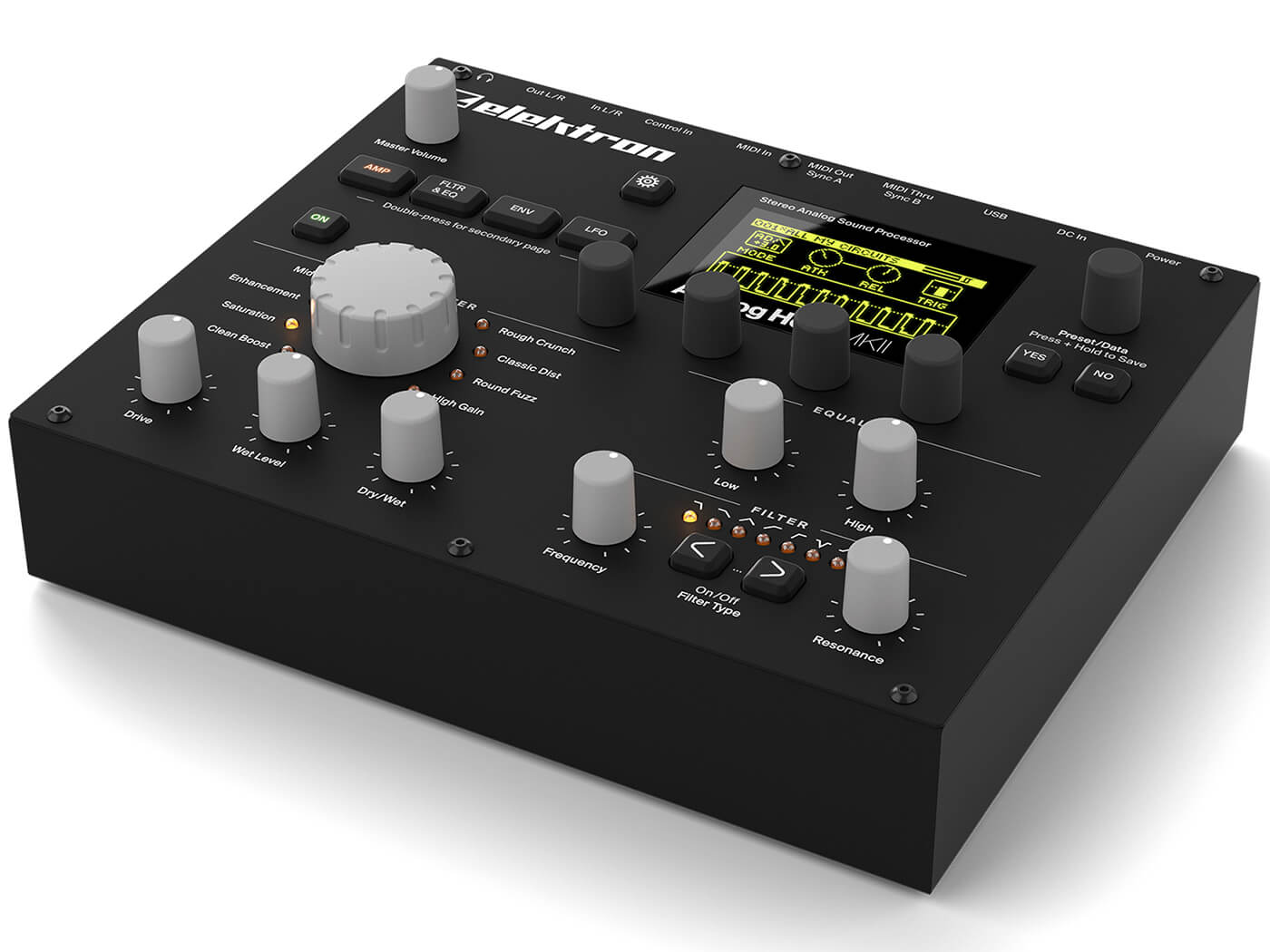Review: OTO Machines BOUM
Looking to add an extra touch of analogue warmth to your tracks, even when performing in the live sphere? OTO Machines may have the perfect solution…


Price £449/$565/€462
Contact OTO Machines
BOUM, from France’s OTO Machines, is a hardware compressor/saturator/filter (or ‘analogue stereo warming unit’ as described on the company’s website) that appears to have something to offer producers of all types. For hardware-based musicians, especially those playing live, a bunch of synths and groove boxes going through a mixer can sound more polished and punchy with some controlled compression dialled in. Even the most diehard software-based musician can use some hardware glitz, whether it’s adding something that software doesn’t do so well, or bringing the enjoyment that comes from physical controls. So is the BOUM worth your time?
Shake the room
The package includes the BOUM itself, a mains power supply, a printed manual and a couple of stickers. The BOUM’s metal housing measures 145x145x65mm, with four rubber feet and a ventilation port underneath (do not block this, as it gets warm). The top of the unit has six large knobs and eight buttons and a small display, which consists of two rows of white LEDs. The rear panel has more ventilation, connections for mains-power input, MIDI in, left/right in/out on 4 ¼-inch jacks, and a ⅛-inbch sidechain input. Although the design is brutishly simple, the BOUM comes across as well built, more akin to a guitar pedal in durability terms and it looks better in the flesh than it does in photos.
I begin by connecting the BOUM between an Akai Pro Force and an RME UFX interface. There’s no on switch, so as soon as the mains are connected, the LEDs should light up. The Active button toggles bypass: when it’s lit, you’re on. First thing to do is cycle through the 12 factory presets by pressing the Preset button, which lights an LED in the top row, then one of the lower buttons to choose a preset in the current bank of six. As I am playing a stereo mix from the Force, I dial up preset 1 (‘Fatter Higher Stronger’) and fiddle with the knobs until I get what I need: a noticeable (but-not-too-noticeable) boost and added warmth, which didn’t take long, as the layout is simple but effective.

I recommend using the Active button a lot, to keep perspective on what’s happening to the mix. The Compressor knob scrolls through various combinations of threshold, ratio, and makeup – a lot can be achieved with just that one – at the far left, it’s at 1:1 (off), in the middle, it’s limiting, then as you go beyond that, it enters ‘negative compression’ and anything above the threshold is reduced in volume, for a very cool pumping sound.
There’s very little visual feedback from the display, which can be a good thing, because it forces you to use your ears, though it will go as far as showing an output level and gain reduction.
Plenty of headroom
The Drive control boosts gain after the compressor and Mix provides a mix between the dry and wet signals. This is very important, especially when using more extreme settings. Hi-Cut brings in the 12dB/octave non-resonant high-cut filter, ranging from 20Hz to 20kHZ, and level sets the level of the wet signal. if you set this to 0, and mix to full, there’s no output at all!
Other parameters are set by using the function keys in conjunction with the Data knob, including those for input gain, compressor attack and release, distortion, input gain, gate, and the six dB/octave Lo-Cut filter where, for example, you can select off/75Hz/150Hz/300Hz. If you’re changing presets a lot, you could enable Local mode, which ignores the Mix value in the new preset, so it stays at whatever the current knob position is, a nice feature especially for live use.
My only beef at this point is the colour scheme – red text on dark green is not a good choice for dimly lit studios or stages – I hope that can be remedied in future. Until then, I think I might have to resort to sticking labels on it.

On stereo mixes, the BOUM can work very well as a hybrid compressor/tape sim, with its focus on the mythical ‘warming’ qualities of tape. Even at extreme settings, the Mix control can keep the source sound present for a parallel-processing-type effect. Gain staging is all important: setting the instrument and mixer levels, then the BOUM’s input gain (up to +18 dB available), keeping it clean at every point. There’s plenty of headroom for loud, clean work here, and the noise gate can be used to tame noisy gear or to create calculated chopping effects.
I move on to using the BOUM on individual tracks and being a bit more experimental. I’m immediately impressed – again, it seems to give me more freedom to use more extreme and edgy sounds, on individual drum and bass tracks, in particular. Of course, it’s tempting to overdo it, but so what? That’s part of the fun.
Four distortion modes are available – Boost/Tube/Fuzz/Square – and in conjunction with the filters and gate, there’s so much scope for producing nasty sounds that – much as I appreciated it in a more ‘respectable’ use on stereo mixes – I had a blast using it to destroy synth parts. The sidechain input can be applied to either the gate or the compressor and there’s no problem getting it started with some keyboards I test it with.
A beautiful thing
The BOUM can be used as a fire-and-forget box, where you easily set the values ahead of time to make the resultant sound warmer and that’s the end of it. It’s totally worth using it like that, adding a little boost to everything you do. Alternately, you can use it as more of a dynamic sound-design tool, using the pots and buttons to interact more, or sending MIDI messages to it from your software or other hardware, accepting or filtering CCs, program changes, or notes, giving control over preset selection, sidechaining, compression and other parameters including Drive, Filter, and Mix – this device can be automated and active during the course of a mix or performance. I look forward to trying the BOUM at a live gig; I expect great results.
Compressors in general, and ‘warming’ products in particular, aren’t magic boxes. But I genuinely can’t get a bad sound out of this and the initially obscure button/LED workflow becomes comfortable after just a few minutes. I wouldn’t necessarily put the BOUM into a computer-only setup, because I’d hope a few good plug-ins combined with a quality audio interface would do the job. But for hardware, or hybrid hardware/software setups, absolutely – this is a beautiful thing.
Do I really need this?
For anybody working with music hardware, be it synths or samplers or drum machines, a final-stage processing device equivalent to what you’d put on a master channel in software can be a great idea, especially for live use. You get compression and another stage of gain management if nothing else, both of which are invaluable for keeping your outputs under control at a gig – I wouldn’t play live without a device of this kind on the master. As far as software goes, if performing with something like Ableton Live, you might prefer to keep everything in the computer, but a bit of hardware at the end of the chain is very reassuring, and it’s still true – hardware doesn’t sound like software.
Key features
- Combines compression, distortion, and filtering, in one box
- Designed to ‘thicken’ and ‘warm’ your sound, and more
- Sidechain compressor or gate via 3.5mm input jack
- MIDI DIN input for remote control via external devices
- 36 user preset slots available, 12 factory presets supplied
Alternatives
Elektron
Analog Heat MK II £750/$950

When seeking comparisons for the BOUM, this is the first that springs to mind. It shares a similar purpose, albeit with more features, including USB audio-interface functionality and a heftier price. It’s supremely versatile, at home, in the studio or on stage.
FMR Audio
Really Nice Levelling Amplifier £185/$235

Having created the RNC (Really Nice Compressor), a well-received transparent-sounding device, FMR yielded to customer requests for something ‘colourful’, resulting in the Really Nice Levelling Amplifier. This doesn’t have the sonic destructo-potential of the Heat or BOUM, but it’s likely to find use on everything you do.